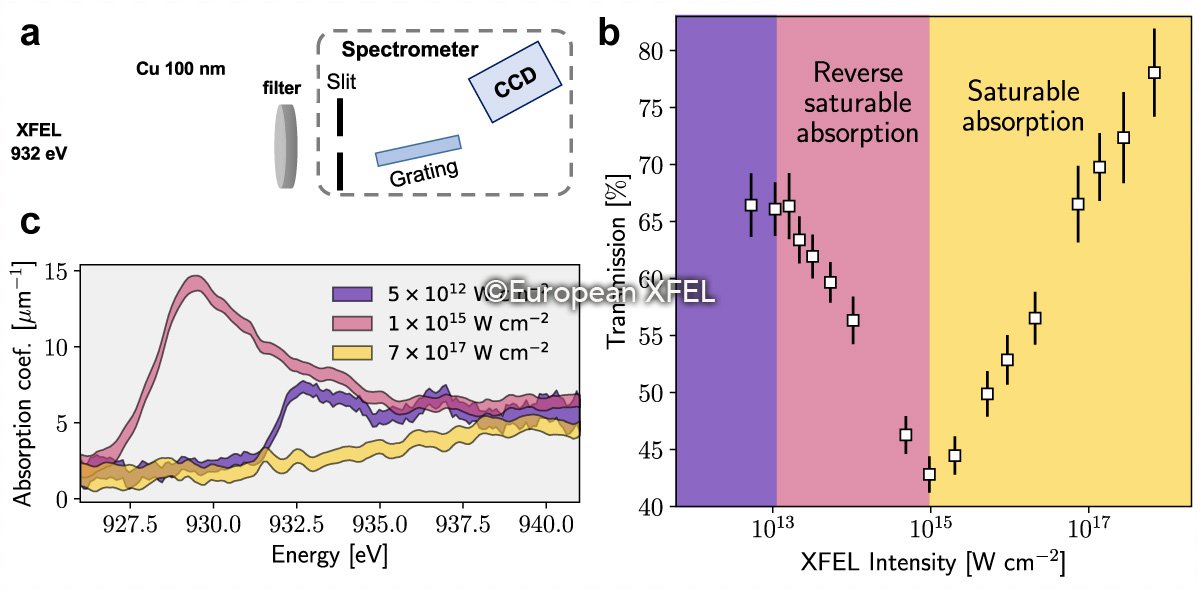The complexity of exploring the extreme conditions of a planet’s interior, or the conditions that lead to a fusion reaction, has baffled scientists for many years. But thanks to a powerful X-ray laser at the European X-Ray Free-Electron Facility (XFEL), an international group of researchers has investigated a state of matter that resembles these environments: warm dense matter (WDM). The findings will aid the advancement of inertial confinement fusion, an experimental technology that could lead to an abundance of clean energy.
Details of their findings were published online in the journal Nature Physics on July 29, 2024.
Heat drastically changes the state of matter. Depending on the temperature, substances are either a solid, liquid, or gas. But at a certain temperature range, matter assumes the WDM state – too hot to be described as dense matter, but at the same time too dense for the physics of weakly coupled plasma. Its enigmatic nature means the boundary between WDM and other states of matter have not been defined. WDM is not stable in our daily environment, making it difficult to produce or examine in a laboratory. Typically, scientists compress samples in diamonds anvil cells to reach high pressures, or use powerful optical lasers to turn solids into WDM for a tiny fraction of a second.
“The capabilities of a free-electron laser, however, have enabled us to observe phenomena in matter that were previously impossible to detect,” points out Zhong Yin, an associate professor at SRIS, Tohoku University. By employing the intense X-ray pulses of the European XFEL, Zhong and his colleagues could generate and analyze WDM, using copper as the sample material. The intensity of the pulses excites the electrons in the copper foil so that it switches to a WDM state, a change which was observed via light transmission.
A metal that is irradiated by an intense X-ray pulse becomes transparent if the electrons in the metal absorb X-ray energy so fast that there are no electrons left to excite. The remaining tail of the pulse can then penetrate the material unhindered. This is known as saturable absorption (SA).
Conversely, a metal can become increasingly opaque if the front of the pulse creates excited states that have higher absorption coefficient than the cold metal. The tail of the pulse is then absorbed stronger, an effect known as reverse saturable absorption (RSA). Both processes are routinely used in optics to generate a specific pulse length with lasers.
The researchers irradiated focused, 15 femtosecond-short X-ray pulses onto a 100 nanometre-thick copper film, analysing the transmitted signal using a grating spectrometer. “The spectrum depends on the intensity of the X-ray pulse,” explains Laurent Mercadier, a scientist based at the European XFEL who led the experiment. “At low-to-moderate X-ray intensity, copper becomes more and more opaque to the X-ray beam and exhibits RSA. However, at higher intensities, absorption saturates, and the foil becomes transparent.”

These drastic alterations of opacity happen so fast that the atomic nuclei in the metal do not have time to move. “We are dealing with an exotic state of matter where the lattice is cold, and the ionised electrons are hot and are not in equilibrium with the remaining free electrons of the metal,” adds Mercadier: “To account for this, we developed a theory that combines solid-state and plasma physics.” For the researchers, the change of opacity is a sign that they have succeeded in creating and characterizing EDM in the laboratory.
Looking ahead, the researchers are confident that continuing advancements in laser technology will lead to greater understanding of WDM. “Even shorter X-ray pulses are needed to resolve electron dynamics,” says Andreas Scherz, head scientist at the SCS instrument at the European XFEL. “Recently, the European XFEL has demonstrated attosecond pulses, thus opening a door to ‘attosecond physics’ and potentially making the precise filming of electrons during the formation of WDM or chemical reactions possible.
- Publication Details:
Title: Transient absorption of warm dense matter created by an X-ray free-electron laser
Authors: Laurent Mercadier, Andrei Benediktovitch, Špela Krušič, Joshua J. Kas, Justine Schlappa, Marcus Agåker, Robert Carley, Giuseppe Fazio, Natalia Gerasimova, Young Yong Kim, Loïc Le Guyader, Giuseppe Mercurio, Sergii Parchenko, John J. Rehr, Jan-Erik Rubensson, Svitozar Serkez, Michal Stransky, Martin Teichmann, Zhong Yin, Matjaž Žitnik, Andreas Scherz, Beata Ziaja & Nina Rohringer
Journal: Nature Physics
DOI:








